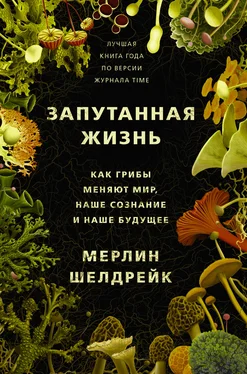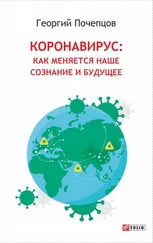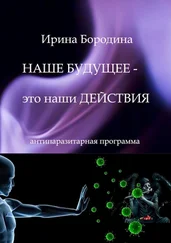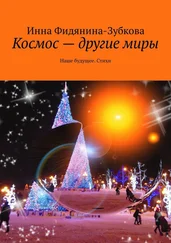Scharf C. 2016. How the Cold War Created Astrobiology. Nautilus : nautil.us/issue/32/space/how-the-cold-war-created-astrobiology-rp [accessed October 29, 2019].
Scharlemann JP, Tanner EV, Hiederer R, Kapos V. 2014. Global soil carbon: understanding and managing the largest terrestrial carbon pool. Carbon Management 5: 81–91.
Schenkel D, Maciá-Vicente JG, Bissell A, Splivallo R. 2018. Fungi indirectly affect plant root architecture by modulating soil volatile organic compounds. Frontiers in Microbiology 9: 1847.
Schmieder SS, Stanley CE, Rzepiela A, van Swaay D, Sabotič J, Nørrelykke SF, deMello AJ, Aebi M, Künzler M. 2019. Bidirectional propagation of signals and nutrients in fungal networks via specialized hyphae. Current Biology 29: 217–28.
Schmull M, Dal-Forno M, Lücking R, Cao S, Clardy J, Lawrey JD. 2014. Dictyonema huaorani (Agaricales: Hygrophoraceae), a new lichenized basidiomycete from Amazonian Ecuador with presumed hallucinogenic properties. The Bryologist 117: 386–94.
Schultes RE. 1940. Teonanacatl: The Narcotic Mushroom of the Aztecs. American Anthropologist 42: 429–43.
Schultes RE, Hofmann A, Rätsch C. 2001. Plants of the Gods: Their Sacred, Healing, and Hallucinogenic Powers . Rochester, VT: Healing Arts Press, 2nd edition.
Seaward M. 2008. “Environmental role of lichens.” In Lichen Biology . Nash TH, ed. Cambridge, UK: Cambridge University Press, pp. 274–98.
Selosse M-A. 2002. Prototaxites : a 400 Myr old giant fossil, a saprophytic holobasidiomycete, or a lichen? Mycological Research 106: 641–44.
Selosse M-A, Schneider-Maunoury L, Martos F. 2018. Time to re-think fungal ecology? Fungal ecological niches are often prejudged. New Phytologist 217: 968–72.
Selosse M-A, Schneider-Maunoury L, Taschen E, Rousset F, Richard F. 2017. Black truffle, a hermaphrodite with forced unisexual behaviour. Trends in Microbiology 25: 784–87.
Selosse M-A, Strullu-Derrien C, Martin FM, Kamoun S, Kenrick P. 2015. Plants, fungi and oomycetes: a 400-million year affair that shapes the biosphere. New Phytologist 206: 501–6.
Selosse M-A, Tacon LF. 1998. The land flora: a phototroph-fungus partnership? Trends in Ecology & Evolution 13: 15–20.
Sergeeva NG, Kopytina NI. 2014. The first marine filamentous fungi discovered in the bottom sediments of the oxic/anoxic interface and in the bathyal zone of the black sea. Turkish Journal of Fisheries and Aquatic Sciences 14: 497–505.
Sheldrake M, Rosenstock NP, Revillini D, Olsson PA, Wright SJ, Turner BL. 2017. A phosphorus threshold for mycoheterotrophic plants in tropical forests. Proceedings of the Royal Society B 284: 20162093.
Shepherd V, Orlovich D, Ashford A. 1993. Cell-to-cell transport via motile tubules in growing hyphae of a fungus. Journal of Cell Science 105: 1173–178.
Shomrat T, Levin M. 2013. An automated training paradigm reveals long-term memory in planarians and its persistence through head regeneration. Journal of Experimental Biology 216: 3799–810.
Shukla V, Joshi GP, Rawat MSM. 2010. Lichens as a potential natural source of bioactive compounds: a review. Phytochemical Reviews 9: 303–14.
Siegel RK. 2005. Intoxication: The Universal Drive for Mind-Altering Substances . Rochester, VT: Park Street Press.
Silvertown J. 2009. A new dawn for citizen science. Trends in Ecology & Evolution 24: 467–71.
Simard S. 2018. “Mycorrhizal Networks Facilitate Tree Communication, Learning, and Memory.” In Memory and Learning in Plants . Baluska F, Gagliano M, Witzany G, eds. Springer International Publishing, pp. 191–213.
Simard S, Asay A, Beiler K, Bingham M, Deslippe J, He X, Phillip L, Song Y, Teste F. 2015. “Resource Transfer Between Plants Through Ectomycorrhizal Fungal Networks.” In Mycorrhizal Networks . Horton T, ed. Springer International Publishing, pp. 133–76.
Simard S, Perry DA, Jones MD, Myrold DD, Durall DM, Molina R. 1997. Net transfer of carbon between ectomycorrhizal tree species in the field. Nature 388: 579–82.
Simard SW, Beiler KJ, Bingham MA, Deslippe JR, Philip LJ, Teste FP. 2012. Mycorrhizal networks: Mechanisms, ecology and modelling. Fungal Biology Reviews 26: 39–60.
Singh H. 2006. Mycoremediation . New York, NY: John Wiley & Sons.
Slayman C, Long W, Gradmann D. 1976. “Action potentials” in Neurospora crassa , a mycelial fungus. Biochimica et Biophysica Acta 426: 732–44.
Smith SE, Read DJ. 2008. Mycorrhizal Symbiosis . London, UK: Academic Press.
Solé R, Moses M, Forrest S. 2019. Liquid brains, solid brains. Philosophical Transactions of the Royal Society B 374: 20190040.
Soliman S, Greenwood JS, Bombarely A, Mueller LA, Tsao R, Mosser DD, Raizada MN. 2015. An endophyte constructs fungicide-containing extracellular barriers for its host plant. Current Biology 25: 2570–576.
Song Y, Simard SW, Carroll A, Mohn WW, Zeng R. 2015a. Defoliation of interior Douglas-fir elicits carbon transfer and stress signalling to ponderosa pine neighbors through ectomycorrhizal networks. Scientific Reports 5: 8495.
Song Y, Ye M, Li C, He X, Zhu-Salzman K, Wang R, Su Y, Luo S, Zeng R. 2015b. Hijacking common mycorrhizal networks for herbivore-induced defence signal transfer between tomato plants. Scientific Reports 4: 3915.
Song Y, Zeng R. 2010. Interplant communication of tomato plants through underground common mycorrhizal networks. PLOS ONE 5: e11324.
Southworth D, He X-H, Swenson W, Bledsoe C, Horwath W. 2005. Application of network theory to potential mycorrhizal networks. Mycorrhiza 15: 589–95.
Spanos NP, Gottleib J. 1976. Ergotism and the Salem village witch trials. Science 194: 1390–4.
Splivallo R, Fischer U, Göbel C, Feussner I, Karlovsky P. 2009. Truffles regulate plant root morphogenesis via the production of auxin and ethylene. Plant Physiology 150: 2018–29.
Splivallo R, Novero M, Bertea CM, Bossi S, Bonfante P. 2007. Truffle volatiles inhibit growth and induce an oxidative burst in Arabidopsis thaliana. New Phytologist 175: 417–24.
Splivallo R, Ottonello S, Mello A, Karlovsky P. 2011. Truffle volatiles: from chemical ecology to aroma biosynthesis. New Phytologist 189: 688–99.
Spribille T. 2018. Relative symbiont input and the lichen symbiotic outcome. Current Opinion in Plant Biology 44: 57–63.
Spribille T, Tuovinen V, Resl P, Vanderpool D, Wolinski H, Aime CM, Schneider K, Stabentheiner E, Toome-Heller M, Thor G, et al. 2016. Basidiomycete yeasts in the cortex of ascomycete macrolichens. Science 353: 488–92.
Stamets P. 2005. “Global Ecologies, World Distribution, and Relative Potency of Psilocybin Mushrooms.” In Sacred Mushroom of Visions: Teonanacatl . Metzner R, ed. Rochester, VT: Park Street Press, pp. 69–75.
Stamets P. 2011. Mycelium Running . Berkeley, CA: Ten Speed Press.
Stamets P. 1996. Psilocybin Mushrooms of the World . Berkeley, CA: Ten Speed Press.
Stamets PE, Naeger NL, Evans JD, Han JO, Hopkins BK, Lopez D, Moershel HM, Nally R, Sumerlin D, Taylor AW, et al. 2018. Extracts of polypore mushroom mycelia reduce viruses in honey bees. Scientific Reports 8: 13936.
State of the World’s Fungi. 2018. Royal Botanic Gardens, Kew, UK. stateoftheworldsfungi.org [accessed October 29, 2019].
Steele EJ, Al-Mufti S, Augustyn KA, Chandrajith R, Coghlan JP, Coulson SG, Ghosh S, Gillman M, Gorczynski RM, Klyce B, et al. 2018. Cause of Cambrian Explosion – Terrestrial or cosmic? Progress in Biophysics and Molecular Biology 136: 3–23.
Читать дальше
Конец ознакомительного отрывка
Купить книгу










